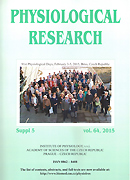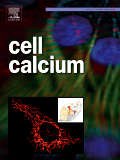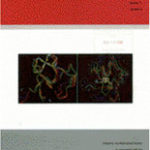HHMI-55000343
Molecular mechanisms of calcium signaling in cardiac excitation-contraction coupling
Principal Investigator: Alexandra ZahradníkováDuration: January 2001 – December 2005
|
Annotation:Transduction of electrical excitation to cell contraction in mammalian heart is mediated by calcium signaling between voltage-dependent calcium channels (DHPRs) of the surface membrane, and ryanodine receptors (RyRs) of the sarcoplasmic reticulum. The objective of this project is to understand how this process, stochastic in nature, is orchestrated. We will use three complementary approaches: Analysis of Ca2+ currents and intracellular calcium signals in isolated mammalian cardiac myocytes; characterization of single DHPRs in membrane patches and of single RyRs in lipid bilayers; and mathematical modeling and computer simulation from the single-channel to the whole cell level. We will define elementary mechanisms of Ca2+ signaling in DHPR/RyR clusters, and their relation to excitation-contraction coupling (ECC) at the whole-cell level. These studies are aimed to provide new basic knowledge on grading and efficiency of cardiac ECC with possible implications in cardiology. |
Keywords:ryanodine receptor, cardiac myocyte, excitation-contraction coupling |
Objectives:Excitation-contraction coupling in mammalian cardiac muscle occurs in specialized tubulo-reticular junctions, and is mediated by calcium signaling between the plasma membrane calcium channels (DHPRs) and the juxtaposed ryanodine receptors (RyRs) of sarcoplasmic reticulum cisternae. In spite of the positive feedback inherent in the underlying calcium-induced calcium release mechanism, E-C coupling is smoothly graded with amplitude and duration of the excitatory signal. The overall goal of this proposal is to understand how the effective excitation-contraction coupling is achieved. We will define the key mechanisms of calcium signaling between DHPRs and RyRs at four levels: (1) Control of RyR activation by unitary DHPR Ca-currents. (2) Inactivation of DHPRs by calcium ions released through RyRs. (3) Mutual coupling, or synchronization, of both, activation and inactivation of individual RyRs within a single dyad. (4) Synchronization of the calcium release at individual dyads within the myocyte by the excitatory signal. These studies will provide new knowledge on calcium control of grading and efficiency of cardiac E-C coupling, and might offer original therapeutic strategies to restore normal E-C coupling in diseased heart. |
Publications: |

 contact
contact







